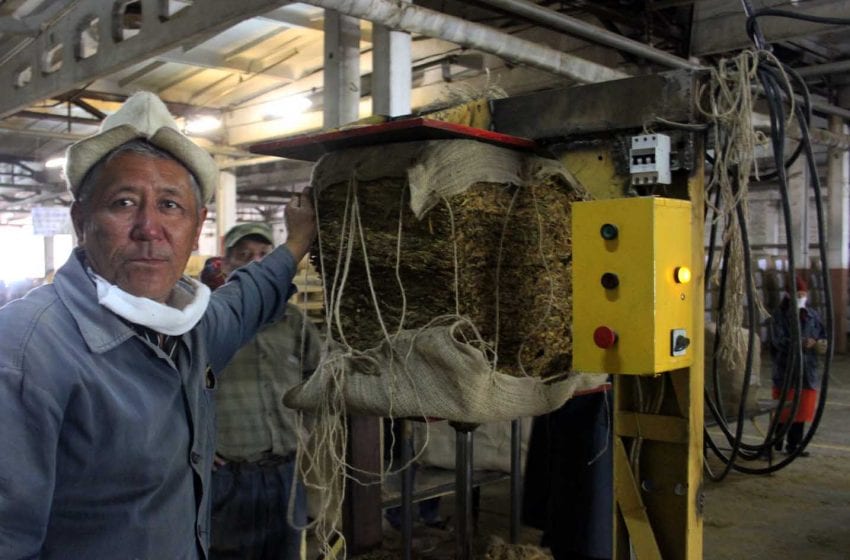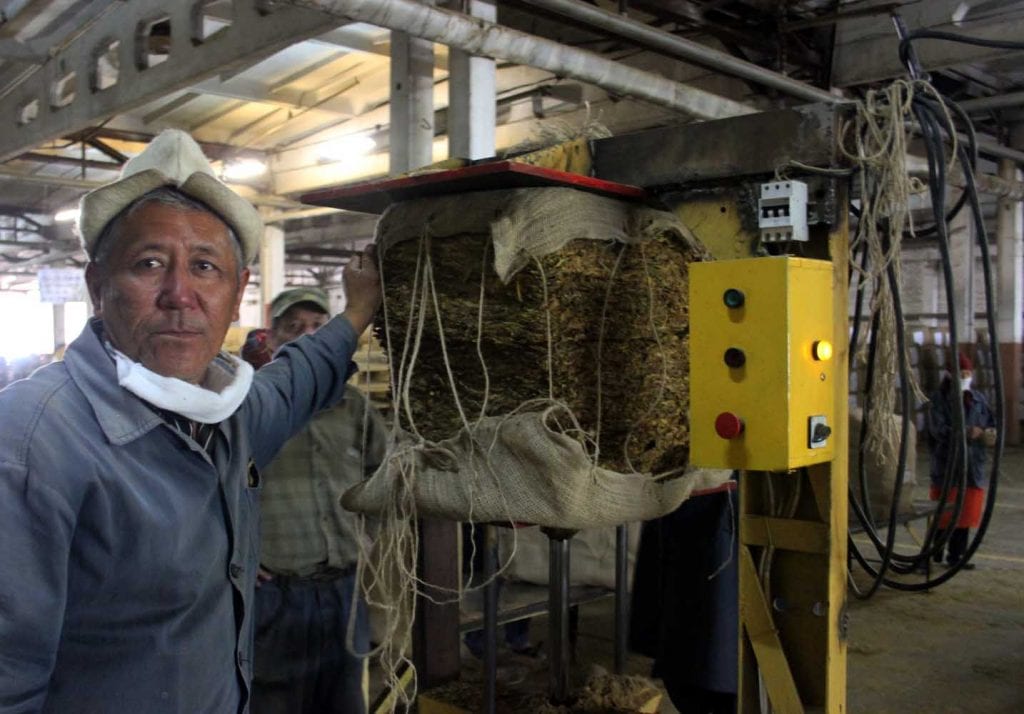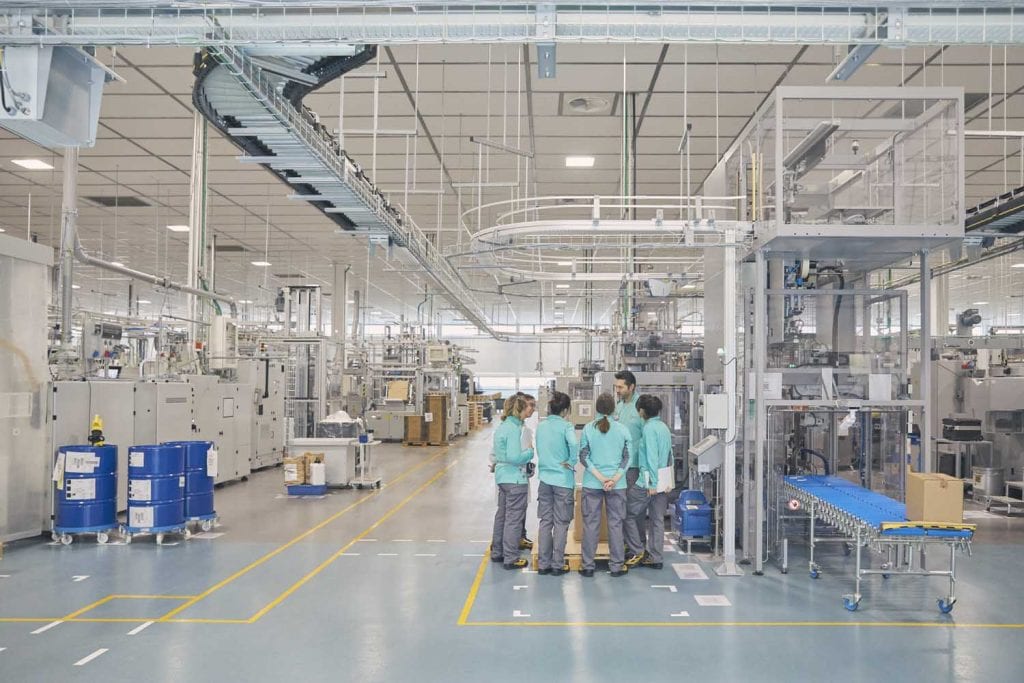Grace Under Pressure
- Also in TR Print Edition
- June 1, 2020
- 0
- 17 minutes read

Industry leaders relate how they have been coping with the coronavirus pandemic.
By Stefanie Rossel

Roughly six months have passed since China announced the outbreak of a mysterious lung disease, and Covid-19 is still raging around worldwide. On its journey around the globe, the virus has prompted governments to introduce strict measures to curb infections. Entire industries have been paralyzed, supply chains have been disrupted and global travel has been placed into an artificial coma. Under anti-coronavirus restrictions, consumer behavior changed in many countries as distribution channels were cut off and the question of what constitutes an “essential business” was hotly debated.
Living up to its reputation, the tobacco industry has so far appeared resilient (see “An Ill Wind,” Tobacco Reporter, May 2020). Amid growing uncertainty, Philip Morris International (PMI) in April announced strong quarterly results, generating net revenues of $7.15 billion in the first three months of 2020, up from $6.75 billion during the same period last year. However, CEO Andre Calantzopolous expected the pandemic to adversely impact PMI’s full-year results. The pandemic, he said, had already severely reduced the company’s duty-free sales, slowed IQOS user acquisition and delayed minimum price enforcement in Indonesia. “We also have to assume that, in certain markets, unemployment and related reductions in disposable income will have a temporary impact on market dynamics or the ability of certain small retailers to operate,” said Calantzopolous.
The company reemphasized that it maintained sufficient inventory of inputs and finished goods and didn’t expect to see a disruption to its supply. According to the press release from April 21, all heated-tobacco unit facilities were operational while manufacturing facilities representing 20 percent of the company’s cigarette production were closed.
British American Tobacco (BAT) and Japan Tobacco International (JTI) provided a similar picture in their first quarter 2020 results. While acknowledging that the impact from the Covid-19 pandemic is difficult to predict, both maintained their full-year forecasts. BAT, which at the end of April stated that most of its factories were open and operating at full capacity, said it expected the global industry cigarette and heated-tobacco product volume to decline by around 5 percent, compared to 4 percent earlier, but maintained its forecast for a 5 percent drop in the U.S.

Increased demand
Analysts insist the cigarette industry continues to offer a haven in the current uncertain business environment. In a survey of 2,000 consumers, Morgan Stanley found that smoker behaviors and attitudes toward cigarettes appeared unaltered by the pandemic—an observation shared by Iqbal Lambat, president and CEO of Star Agritech International (SAI). Headquartered in Turkey and operating in 40 countries, SAI sources its leaf worldwide and thus has a good feel for the state of the global industry.
“Cigarette consumption has probably increased since social lockdowns were enacted,” says Lambat. “Our clients have also benefitted substantially from this phenomenon. As an example, in Italy at the start of the outbreak, the Italian government shut down all industries in the north in the Vicenza area. Two weeks later, the government declared cigarette production an absolute necessity and allowed cigarette factories to resume production. Our tobacco shipments to these clients have doubled as the factories try to keep up with demand. Demand has also grown with most of our clients worldwide, except in South Africa where the government imposed a complete ban on the sale of cigarettes, tobacco products and alcohol to minimize social gatherings.” The ban was not lifted when South Africa eased its lockdown restrictions on April 24. It is expected that the ban will only be lifted when the country declares a level 2 pandemic versus the current high level 4.
The global reach of the pandemic is forcing tobacco firms to rethink their supply chains, which increasingly relied on just-in-time deliveries and minimal stock keeping. According to Lambat, SAI was already well positioned for the new operating conditions. “Star is the only leaf merchant in the world that has established tobacco depots within close geographic proximity to that region’s clients,” he says. “We store in these depots the most popular tobacco grades and tobacco derivatives, such as reconstituted tobacco, DIET, CRES, fines and stems for the clients of that geographic cluster.
“As such, we have tobaccos in Antwerp, Belgium, to service the EU; Kostrama, Russia, to service the CIS states; Johannesburg, South Africa, to service Southern Africa; Jember and Malang, Indonesia, to service South East Asia; Busan, South Korea, to service North Asia; and Santiago, Dominican Republic, to service cigar manufacturers in [the] Dominican Republic and Nicaragua.
“These depots are well stocked and replenished. So when the pandemic struck beginning [in] March, we were in excellent shape to continue supplying globally ex-depot. As the industry knows of our stocks’ availability, we even received requests to supply from our depots to new clients whose orders were blocked at origin.”
Several sourcing countries suspended their tobacco auctions due to the coronavirus crisis. SAI experienced disruptions in Argentina, India, Indonesia and China. “There were short temporary disruptions from Brazil,” he adds.
Most of the company’s Indian tobaccos are destined for Europe. “We typically carry a three-month rotating stock for these tobaccos in Antwerp,” says Lambat. “The late starts of auctions in Malawi and Zimbabwe will not affect Star Agritech as, over the years, we have migrated much of that sourcing to Argentina, Brazil and Tanzania.”
A lesson to be learned
While warehouses will sustain the supply of leaf in the short term, replenishment of raw tobacco will become a challenge as travel restrictions persist. Buying tobacco usually involves the physical examination of leaf quality by the merchant. “This has become a problem,” says Lambat. “Fortunately, we work with excellent suppliers that minimize the risk of the merchandise not being in correlation with the received reference sample on which the order is placed.”
Assessing the future impact of the pandemic on the leaf sector, Lambat recalls the years 2014–2016 when the tobacco industry struggled with severe oversupply. “This was created by major buyers’ ‘bean counters’ who decided that manufacturers should not procure but de-stock to carry one year of inventory versus two years and minimize working capital,” he says. “As I respond to your questions, I am in lockdown in Turkey with most of the world in a similar situation. So this can go on for a long time.”
The lesson companies should learn from the coronavirus crisis, says Lambat, is about security of supply. While multinational manufacturers have the working capital to cope with the disruption, smaller players should consider partnerships with merchants that can ensure non-balance sheet security of supply, he suggests.

Two-months’ halt
Home to a state-of-the-art PMI cigarette/tobacco-heating unit factory and several prominent tobacco machinery manufacturers, Italy was among the hardest hit countries in the pandemic. On March 23, the Italian government extended its mandatory closure of nonessential commercial activities to heavy industry.
“The wise decision of our government, which perhaps came a little late, was very useful for the health of our population, and we are seeing and appreciating the good results now,” says Lorenzo Curina, chief operating officer and sales director of Godioli & Bellanti, a company specialized in leaf processing and primary equipment.
But economy is a different story, he notes. Production at Godioli & Bellanti was at a complete standstill for almost two months. “Now we have begun to work again—since April 28 at ‘full steam,’” says Curina. “With [the] corona[virus] being a pandemic, our international clients understood such a situation, and they have adapted to such an emergency. International solidarity!”
Throughout the crisis, Godioli & Bellanti kept in touch with its customers daily. “Thanks to smart working, ourselves and our engineers and our technicians operated locked down at their homes,” says Curina. “We utilized communication platforms to talk about work, to exchange technical opinions and to give each other psychological support in the sense of ‘don’t worry, our company is alive in spite of such an epidemic.’”
Italy’s statistical office estimates the economic damage of the lockdown at around €100 billion ($108 billion) per month in addition to a loss of added value of €27 billion. The country’s government has announced a €400 billion aid program for companies, which may also help some of the tobacco engineering firms affected by the crisis.
Reviving Italy’s industries
Regarding the impact of the pandemic on his company’s supply chain, Curina distinguishes two phases: the period of deep lockdown and the current reopening. “During lockdown time, everything was slow: couriers, suppliers, providers, bankers,” he says. “Thank God we had in our warehouse most of the components and pieces necessary to continue assembly and production.”
Curina believes it’s to early to judge how the reopening will proceed, but he takes comfort from history. The greatest economic boom of the 20th century, Curina recalls, recurred after one of its greatest disasters—World War II. “I feel that people want to restart, want to work, want to show that they are alive,” he says.
The continuing travel restrictions, however, are an issue for Curina and his sales force as well as for his engineers and technicians. “This is a real problem and will be the last problem to be solved,” he says. “The pandemic is a world problem. Perhaps Italians will be authorized to fly out in the next few months while few countries where our customers live will still be locked down.”
Curina is cautiously optimistic that his country’s economy will recover. “I don’t have a crystal ball but today, Monday, May 4, is the first day we, as Italians, are authorized to begin production again, to open our factories just like before. If, in the next 15 to 20 days, the curves indicating the number of newly infected people and deaths do not rise, we can begin to cautiously think that the worst is over.”

E-cigarette delivery bottlenecks
The Covid-19 pandemic has also created considerable challenges for the vapor business. Because the pandemic originated in China where more than 90 percent of the world’s e-cigarette hardware is manufactured, the electronic nicotine-delivery system (ENDS) category experienced significant supply chain disruptions early on.
According to a report published by TMA in April, the coronavirus outbreak shuttered factories throughout Guangdong Province—the epicenter of China’s e-cigarette manufacturing industry—between January and mid-February 2020.
What’s more, the pandemic came on the heels of new restrictions on the online sales of vapor products in China to discourage underage access. As a result, many e-cigarette manufacturers were in the process of shifting sales to physical stores just when the pandemic hit. Coupled with the Covid-19 outbreak, the industry was hence dealt two heavy blows in a short time. By April 20, only a few enterprises in the ENDS industry had resumed production.

“The majority of technical components is being produced in China,” says Horst Winkler, spokesman of Verband des e-Zigarettenhandels (VdeH), a German association of e-cigarette retailers. “Since the corona[virus] outbreak there already led to extensive limitations and quarantine measures at the beginning of the year, there were delivery bottlenecks even before the pandemic reached Europe. Meanwhile, the China-based companies have recommenced manufacture under strict safety measures and are able to supply [their customers]. However, companies’ dispatch logistics are under enormous pressure, which causes further delays.”
VdeH is in continuous contact with its members in China. “We keep each other up to date with regard to the situation,” says Winkler. “As restrictions are increasingly being eased and the situation in China slowly begins to normalize, we expect the situation to improve in the short term.”
To comply with national regulations, most e-liquids for the German market are produced domestically or in other EU countries. When it comes to hardware, however, most countries depend heavily on China. “The production in Europe and especially in Germany is restricted to a few high-end devices that cannot replace Chinese products—neither in quantities nor in pricing,” says Winkler.

Is vaping essential?
Distribution of sales outlets
presented another problem for the German vapor industry during the early weeks of the pandemic. The decision of whether vape shops could stay open because they provide an essential service was made at the federal, state and local community levels, creating a patchwork of inconsistent rules until all shops with sizes up of to 800 square meters were allowed to open on April 24.
“Some retailers tried to compensate for the complete loss of revenues with collection and delivery services. But even in places where such services were possible, only a fraction of the otherwise usual turnover could be generated,” says Winkler. “Nevertheless, it was important to show some presence to regular clients and to enable them to cater to their needs.”
Many vape shops fear for their existence. “This could have been avoided if politics had assessed the meaning of e-cigarette retailers in the primary care of the population correctly from the start,” says Winkler. “Some shops have been closed permanently, but we do not have any concrete data yet. We will probably be able to determine the impact of the crisis only in a few months.”
Without doubt, he concludes, online retail was the big winner. His organization observed a considerable increase in the quantities ordered through that channel—although the gain was partly offset by capacity limitations among shipping companies.




